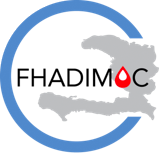Complications may arise if high blood pressure is not controlled through treatment. It is important to note that hypertension itself is not a disease: it is only a factor. In other words, its existence is neither necessary nor sufficient to see the diseases develop in the individual. At the population level, hypertension is a major public health issue. At the individual level, it has only a low predictive value on the development of vascular problems. They can be:
- the "mechanical" consequence of increased arterial pressure on the vessels (rupture of the latter with haemorrhages)
- the "mechanical" consequence on the heart pump working at high pressures for a long time
- the consequence of participation in the formation or growth of atheroma, obstructing the arteries more or less gradually
The principal complications are cardiac, neurological and renal.
Heart complications
The increased workload of the heart due to increased blood pressure results in very early left ventricular hypertrophy (enlargement of volume), which can be detected by electrocardiography (ECG) or cardiac ultrasound. This hypertrophy may regress under antihypertensive treatment. Later if hypertension is not under control, the heart cavities dilate and the contractile function of the myocardium (heart muscle) deteriorates, causing the signs of heart failure to appear. In addition, atherosclerotic coronary disease and the increased oxygen requirements of an enlarged heart explain the frequent occurrence of coronary insufficiency in hypertensive patients. Hypertension facilitates the formation of atherosclerotic plaque, which, when ruptured, forms a thrombus (clot) that can lodge at a coronary. The coronary will then be clogged and the heart zone normally irrigated by it will gradually necrotic: it is myocardial infarction.
Neurological complications
Retinal changes can be observed at the fundus. They inform the medical staff and allow the monitoring of vascular involvement related to hypertension: spasm, narrowing of arterioles, appearance of exudates or haemorrhages, papillary edema, etc. Central nervous system involvement is common. It manifests itself in particular by the possible occurrence of:
- a hemorrhagic stroke, rupture of a cerebral vessel, or ischemia by obstruction of an artery by atheroma or thrombus (a consequence of the rupture of an atheromatous plaque). According to WHO, a hypertensive patient is 2-3 times more likely to have a stroke;
- hypertensive encephalopathy (severe hypertension, disturbances of consciousness, retinopathy with papillary edema, seizures), in the case of very high-grade hypertension;
- an arterial disease, by diffuse attack of the cerebral arteries by atheroma.
Renal complications
In the kidneys, high blood pressure is responsible for nephroangiosclerosis and promotes the occurrence of kidney failure. Impairment of renal function is often very early and moderate, but may progressively worsen. According to the WHO, this risk would be multiplied by 2 to 10 times in the hypertensive population.
Other complications
- Gestational accidents (that is to say, in the pregnant woman). Hypertension favors gestational accidents: eclampsia, perinatal mortality, etc.
- Various vascular complications: aneurysms, aortic dissection, arteriopathy of the lower limbs;
- Malignant hypertension: rare in the present day because of treatment possibilities, malignant hypertension is characterized by a very high blood pressure with renal disorders, neurological (hypertensive encephalopathy, important alterations of the fundus of the eye) and cardiac (insufficiency of left ventricular with acute pulmonary edema).


